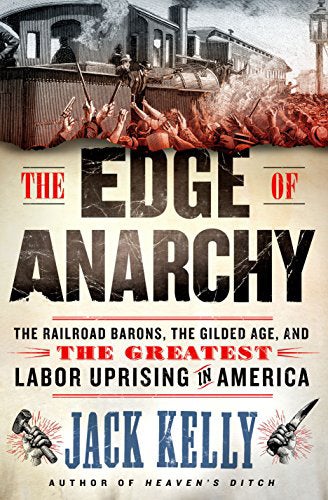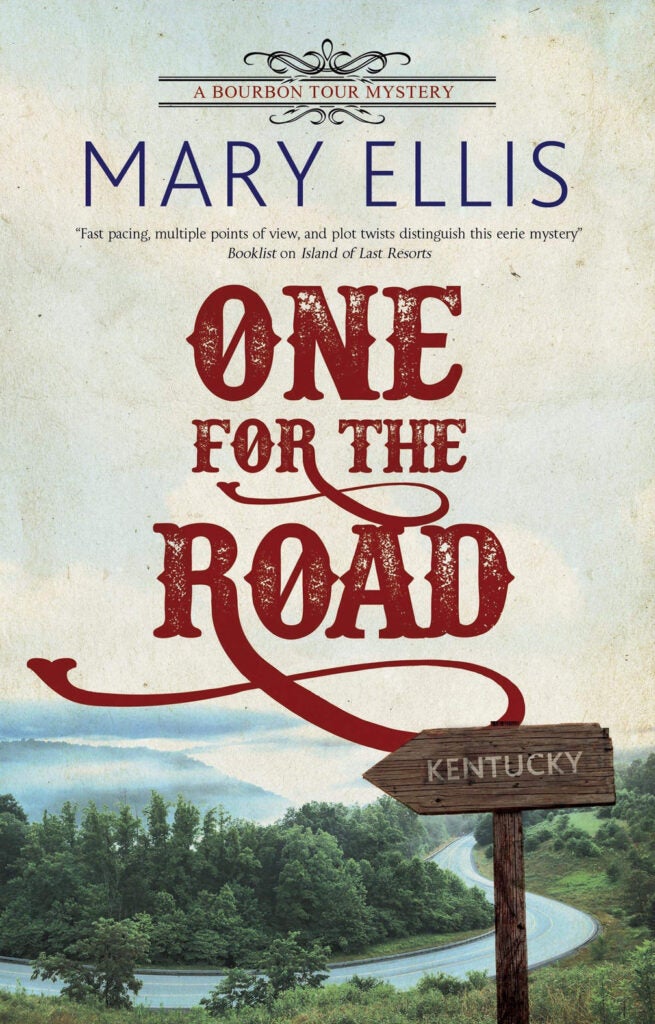
“The Edge of Anarchy: The Railroad Barons, the Gilded Age, and the Greatest Labor Uprising in America” by Jack Kelly
Over the last year or so, many of us have heard a lot about living in a second “Gilded Age” fraught with issues of labor shortages, production shortages, criticisms of capitalism and more. But, how many of us know the historical roots of labor uprisings or why the so-called “Gilded Age” is so maligned? And, if these issues faced us so long ago, why pay attention to them now? Surely, life has changed so considerably that anything we might have encountered even a decade ago is no longer applicable now.
However, Jack Kelly’s excellent non-fiction book “The Edge of Anarchy: The Railroad Barons, the Gilded Age, and the Greatest Labor Uprising in America” is sure to feel timely, even precipitous, despite the fact that it chronicles events from almost 130 years ago.
“The Edge of Anarchy” centers on the Pullman Strike that was initiated in Pullman, (Chicago) Illinois in 1894. At that time, Pullman was a company town created by George Pullman of the Pullman Palace Cars/Sleeping Cars fame. Pullman cars were attached to every major railroad throughout the United States and were considered the height of luxury with their silk interiors, custom designs and company-trained porters. However, when the U.S. spiraled into a terrible depression in 1893, George Pullman was determined to maintain his and his shareholders’ wealth — by any means necessary.
Consequently, he cut the wages and even laid off many of his employees, including highly trained and educated engineers, while maintaining — and in some cases, raising — the rents in his company town. Employees and their families found themselves crushed in a vice in which they could not move or quit the Pullman Company because he would blacklist them from all railroad-related employment if they did so, but they could not physically make enough to feed themselves, much less pay their exorbitant rents. Thus, in order to keep their long-term livelihoods, they had to suffer and accrue more debt.
By the early 1890s, labor uprisings had become more and more common in the United States, although they were usually limited to the actions of small guilds or fraternities such as the Brotherhood of Locomotive Engineers and Trainmen or the Order of Railway Conductors of America. But, the extreme wealth of railroad owners, the so-called “robber barons” of the age, made these small labor uprisings increasingly less effective. Owners and their corporations often worked hand-in-hand with each other to keep down wages, blacklist striking employees and circumvent government mandates that prevented monopolies and retaliation. In order to effect any real change, labor needed to band together.
Into this tense situation stepped Eugene V. Debs, a former railway employee who had become an active unionizer and created the American Railroad Union, one of the first unions that stretched across all professional lines. Even less skilled or educated railway workers could join, which comprised the largest section of employees, and together they could work together to strike for better wages, accommodations and treatment.
However, this book shows how complex organizing a labor union can be and how strongly some capitalists held to their principles. It also shows how the government can — and did — side with corporations, even sending out soldiers to shoot at U.S. citizens. The story that Jack Kelly tells is complex and encompasses multiple different perspectives and considerations. Although he does seem to favor Debs and the labor movement, he doesn’t shy away from criticizing laborers or pointing out where the unions overstepped. Mostly, he asks the reader to consider each step of the uprising — who was right, who was wrong and what similarities between then and now do you see.
Before I read this book, I had no idea of the complexities of the labor movement or how far-reaching some of our current issues about labor, capitalization, unionization and solidarity were. Reading “The Edge of Anarchy” has inspired me to do my own further reading, and I think that it will compel you to do the same.
— Review by Cindy Butor, Paul Sawyier Public Library

“One for the Road” by Mary Ellis
Mary Ellis has delivered the first in a new Kentucky-based cozy mystery series featuring the bourbon industry.
Jill Curtis, a travel blogger from Chicago, is sent to Central Kentucky to do research for a travel piece on why thousands of people come to bourbon country every year. She and her videographer, Michael, are looking forward to touring the local distilleries, interviewing master distillers and sampling the different bourbons. When Jill stumbles upon the murdered body of Roger Clark, owner of Black Creek Distillery, she quickly becomes a prime suspect in the crime, especially when she wasn’t supposed to be in the plant by herself. Still, she can’t seem to resist trying to help local law enforcement in the investigation of the crime.
Distillery rivalries, century-old neighbor feuding, budding romances and murder make this a cozy, fun and quick read.
It is especially noteworthy that Ellis has done a great deal of research into the bourbon industry for this book. The next in the series is “100 Proof Murder,” set in Louisville.
— Review by Paul Sawyier Public Library staff

“One Italian Summer” by Rebecca Serle
Katy Silver has always been close with her mother, Carol. Her mother decorated her home after she married. She dines with her parents several times a week, even occasionally still staying there when her husband is out of town.
Both mother and daughter were planning a trip to the Amalfi Coast in Italy to introduce Katy to the favorite places of Carol’s youth. But after her mother gets sick, Katy will face the most complicated challenge of her life, living without her best friend.
Following Carol’s death, an envelope with plane tickets from her mother arrives and Katy decides she can’t face her crumbling world or her ordinary marriage with Eric and flees to Italy.
This is when the time warp happens. It is not explained and Katy is unaware that the stranger she meets at the Positano hotel is her mother, except that they are both the same age. They quickly become friends and Katy finds Carol astonishingly fascinating. Carol seems equally distracted with the charms of the Italian landscape but there is an undercurrent as she explores the many directions her life could take. Should she stay in enchanting Positano or return to the states and her ordinary life?
When Katy finally realizes that she has met the younger version of her own mother, she begins to understand the sacrifices her mother made, giving up her own artistic dreams to care for her family.
The crisis comes about when Katy notices a baby photo in Carol’s apartment and realizes Carol has abandoned her role as mother.
How does the time warp happen? We are never told. But the plot allows daughter to come to know the younger version of her mother, and the events that shaped her life.
This book made me wonder how many of us know our parents and who they were before they had children. What were their dreams, hopes and disappointments?
Serle has written a novel of love, loss, selfishness and flawed humans. But mostly, this is an Italian feast of family love and a little magic.
— Review by Lizz Taylor, Poor Richard’s Books

“Metropolis” by B.A. Shapiro
In a busy downtown Boston, there is a storage facility, the Metropolis, housed in an old 1880s multi-storied brick building. We are initially introduced to the owner who bought the facility as a way of laundering his drug money, but he has now decided to stay legal and give up his old ways.
The manager of the Metropolis makes deals on the side with several of the tenants and for an extra monthly payment, she allows them to live in the building. They get to use the janitor’s facilities for the extra rent money. The occupants include the Venezuelan student whose visa has expired, the wealthy housewife abused by her husband, and the old man who works as a dish washer but carries his camera everywhere. Plus, there is the hot-shot immigration attorney who was fired from his prestigious law firm but has a set up in a storage unit with clients visiting his “office.” Along with the owner and manager, these six characters, as well as the building, are the performers of Shapiro’s imagination.
Everyone might have continued with these arrangements, except for the fact that a man has fallen down the elevator shaft. When the police begin to investigate the accident, the lives of everyone are disrupted. The manager has been illegally pocketing the extra money from the residents, the housewife is in a drug daze most of the time, the student knows that ICE is searching for her and the old man seems to be losing his marbles. The attorney questions his career choice while the owner struggles to find enough legal income to meet the mortgage.
The characters all seem to have nothing in common, but Shapiro connects the dots between them with great skill. She takes her time developing each of them, and constantly wins the reader to the character’s viewpoint.
Shapiro has written a number of previous novels involving art forgery, and artists from the W.P.A. period. This novel is mainly a mystery with the crime scene set in the first few pages. The characters all have murky pasts, and any of them could have been involved. For the art fans of Shapiro’s previous novels, she gives one of the Metropolis residents an unexpected extraordinary talent.
— Review by Lizz Taylor, Poor Richard’s Books









